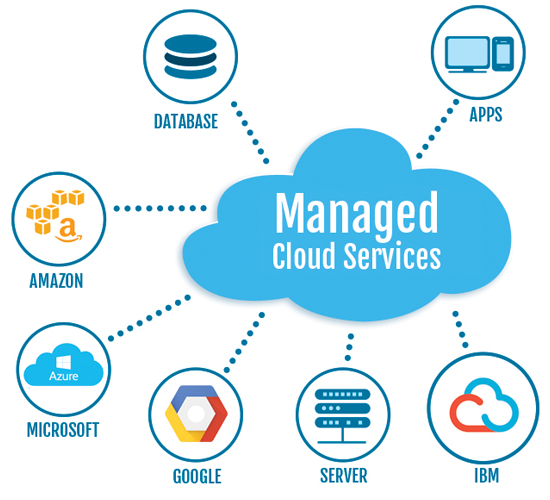LinkDaddy Cloud Services Mastery: Advanced Strategies for Reliable Cloud Services Press Release
LinkDaddy Cloud Services Mastery: Advanced Strategies for Reliable Cloud Services Press Release
Blog Article
Simplify Your Infrastructure With Cloud Services
As services navigate the ever-evolving landscape of modern technology and information management, the function of cloud services in streamlining facilities has actually become increasingly popular. The appeal of streamlined procedures, boosted effectiveness, and enhanced source appropriation with cloud services is obvious. The trip in the direction of a more economical and nimble IT framework includes more than just moving to the cloud. It needs a critical method and a deep understanding of the subtleties of cloud adoption. How can services properly navigate this transition and genuinely open the potential of cloud services for streamlining their facilities?
Benefits of Cloud Provider
Cloud solutions use a streamlined method to managing IT infrastructure, supplying companies with cost-efficiency, scalability, and adaptability. Among the key benefits of cloud services is the scalability they offer. Organizations can conveniently scale their sources up or down based upon need, guaranteeing they only spend for what they make use of. This flexibility is particularly helpful for services with fluctuating requirements or those experiencing growth.
Additionally, cloud solutions get rid of the demand for organizations to purchase costly software and hardware. This cost-efficiency is a considerable advantage, particularly for small to medium-sized enterprises wanting to minimize ahead of time expenses. By making use of cloud solutions, companies can access premium IT resources without the large cost tag related to traditional framework arrangements.
Moreover, cloud solutions give businesses with the flexibility to access their data and applications from anywhere with an internet link. This level of availability improves collaboration among groups, enables remote job, and increases general performance. The flexibility supplied by cloud services equips organizations to adapt promptly to changing market conditions and client needs.
Cost Financial Savings and Scalability
Along with the functional benefits highlighted earlier, the assimilation of cloud solutions right into a company's infrastructure comes up with substantial cost financial savings and boosted scalability. Cloud solutions supply a pay-as-you-go model, enabling organizations to range sources up or down based upon present demands, therefore staying clear of the costs related to keeping excess ability. This adaptability makes it possible for companies to adapt rapidly to varying demands without sustaining unneeded costs.
Additionally, cloud solutions remove the demand for ahead of time financial investments in equipment and software, lowering capital investment. Overhead are also minimized as firms no more need to manage and maintain physical web servers, bring about reduced power intake and IT staffing prices. Furthermore, cloud services give automated updates and upkeep, making sure that the infrastructure stays safe and secure and updated without requiring manual treatments.
Improved Security Measures
Carrying out stringent safety and security steps is critical when integrating cloud services into a company's infrastructure to make sure and guard delicate information compliance with industry laws. Cloud service providers offer boosted protection attributes such as data security, firewall program defense, and multi-factor authentication to reduce cybersecurity risks.
Furthermore, regular security audits and conformity analyses assist recognize susceptabilities and make sure adherence to industry requirements. Firms can likewise gain from attributes like automatic safety updates and real-time threat surveillance offered by cloud service suppliers. By prioritizing security procedures and staying positive in dealing with possible dangers, businesses can confidently utilize cloud services while protecting their useful data from unapproved access or violations.
Transitioning to Cloud Infrastructure
To effectively incorporate cloud services right into a firm's infrastructure, an organized method that resolves the shift in the direction of cloud-based remedies browse this site is essential. Transitioning to shadow infrastructure includes cautious planning and execution to guarantee a smooth movement process. The very first step is to examine the existing infrastructure and establish which applications and systems are ideal for migration to the cloud. This examination must think about factors such as data sensitivity, conformity requirements, and performance requirements.
When the analysis is full, a movement strategy should be created. This strategy must lay out the timeline, resources, and obligations for moving each element to the cloud. It is crucial to interact this plan clearly to all stakeholders to make sure placement and decrease interruptions during the transition.
Throughout the movement screening, procedure and monitoring are important to determine and deal with any issues promptly. Regular checkpoints should be established to track progression and make necessary changes. In addition, training for staff members on utilizing cloud services ought to be offered to make sure a successful shift and make best use of the benefits of the new infrastructure.
Finest Practices for Cloud Fostering
Successful fostering of cloud services depends upon the critical positioning of service objectives with technical capacities and organizational preparedness. To ensure a smooth shift to the cloud, companies must begin by carrying out a thorough Web Site analysis of their current facilities and recognizing which workloads are best fit for cloud migration. It is critical to entail key stakeholders from different departments in the decision-making procedure to get buy-in and address any type of issues early.
An additional ideal practice for cloud adoption is to focus on safety and security and conformity. Organizations has to thoroughly review the safety and security procedures supplied by cloud solution companies and make sure that their information is shielded according to industry requirements and regulative needs. Implementing robust information file encryption, gain access to controls, and normal security audits can help minimize threats related to cloud fostering.

Conclusion

As services browse the ever-evolving landscape of technology and information monitoring, the duty of cloud solutions in simplifying infrastructure has ended up their website being progressively prominent - cloud services press release. Just how can companies effectively browse this change and truly unlock the capacity of cloud services for simplifying their facilities?
Cloud services use a structured technique to handling IT framework, giving businesses with cost-efficiency, flexibility, and scalability. By making use of cloud services, businesses can access top notch IT sources without the substantial cost tag associated with standard facilities configurations.
To make sure a smooth shift to the cloud, organizations must begin by performing a comprehensive evaluation of their present facilities and identifying which work are best fit for cloud movement.
Report this page